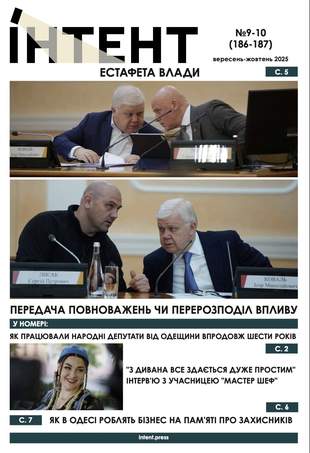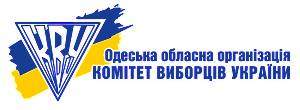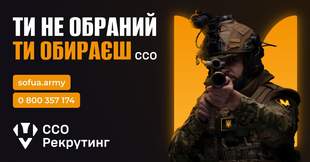Меню
Social networks
Sections
Oct. 3, 2023, 10:58 a.m.
Investigation: Who Abducted Ukrainian Prisoners From The Snihurivka Penal Colony
Цей матеріал також доступний українською305
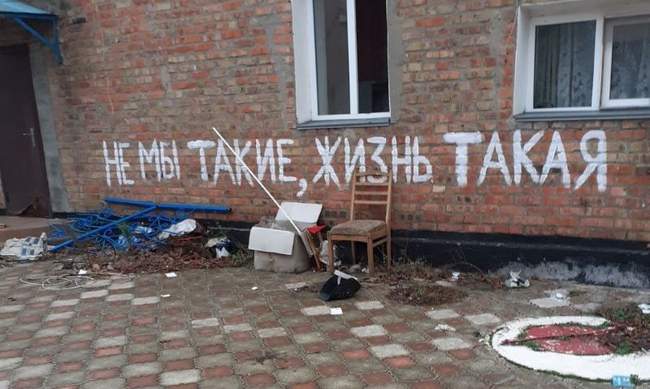
Not we such, Life is such. Photo: Anastasiia, resident of Tsentralne village
For nine months, the village of Tsentralne in Mykolaiv region was under the occupation of Russian troops. The combined forces of the Armed Forces of Ukraine liberated part of the Mykolaiv and Kherson regions in November 2022. But by that time, Russian invaders had time to abduct local residents and all prisoners of the colony in Tsentralne.
The Center for Public Investigations looked into who was involved in war crimes.
Life under the occupiers
The counteroffensive by the Armed Forces of Ukraine in the Kherson direction extended over several months. Several small settlements in the Mykolaiv region, situated along the border with the Kherson region, played a crucial role in the liberation of Kherson. These settlements served as pivotal points in paving the way for the de-occupation of the entire right-bank Kherson region.
During the active hostilities, Russian invaders faced significant resistance from Ukrainian defenders, as revealed by intercepted conversations among Russian military personnel published by the Security Service of Ukraine. Reports indicate that Russian occupiers often vented their frustrations on civilians, resorting to looting and aggressive behaviour.
One anonymous resident from the village of Tsentralne, which was under occupation until November 2022, described the harrowing experiences of the locals: "They started looting equipment, taking buses from an agricultural enterprise. We were afraid to leave our houses, sitting in yards. They came to our Rodnichok agrofirm. Three of them, possibly under the influence of drugs or alcohol, harassed us until late at night, firing shots above our heads and spouting nonsense."
Another resident named Oleksandr shared a brutal encounter: "He hit me. I lost my teeth. I was heading to the colony near the stadium. When I arrived, they asked where I was going. I explained I was going to Vavylieve to deliver food to my second cousin. They were drunk, assaulted me, and that was it."
After the de-occupation, law enforcement officers began their work in the liberated areas. In Tsentralne, the bodies of civilians buried during the occupation were exhumed to determine the cause of death. Additionally, in Tsentralne, Russian troops had set up a headquarters on the grounds of Snihurivka penal colony. There, they interrogated and tortured local residents suspected of cooperating with Ukrainian defence forces. These accounts underscore the brutality and misconduct of the occupying forces during their presence in the region.
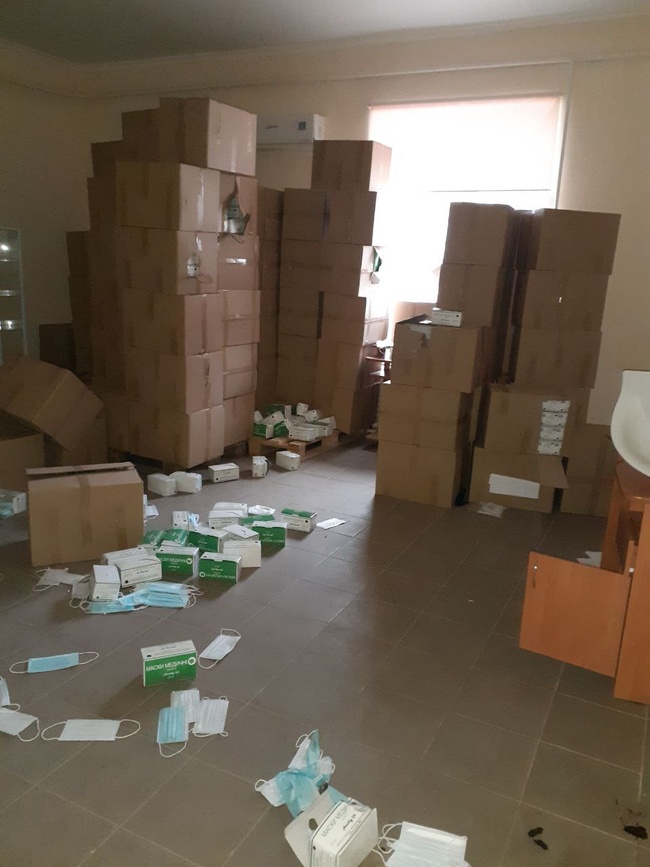 Colony after liberation. Photo: Anastasiia, resident of Tsentralne village
Colony after liberation. Photo: Anastasiia, resident of Tsentralne village
In a report by Radio Svoboda, created immediately after the liberation of Mykolaiv and Kherson regions, residents of Tsentralne shared horrifying accounts of torture endured during the occupation. Oleksii, a resident of Tsentralne, described the brutality: "There they connected current to the legs, poured water on them, beat them with electric current. Then they took a bullet cartridge, poured out the gunpowder, and applied it to the hands, buttocks, and back. And set it on fire. How can a person endure that?"
Ukrainian serviceman Yevhen highlighted the illegal interrogation methods employed by the occupiers: "They had documents from the Bilozirsk military enlistment office. They brought people based on documents, identifying the addresses of those registered. As far as we understand, it was an attempt to suppress potential guerrilla activities. They would seat people at the table, with commissars present, and then the interrogation itself would commence."
One of the most heinous war crimes committed by the occupiers in Tsentralne was the abduction of Ukrainian citizens, with the fate of many still unknown. These testimonies shed light on the severe human rights abuses and atrocities perpetrated by the occupying forces during their presence in the region.
Occupiers abducted Ukrainian prisoners
The territory of Tsentralne includes Snihurivka penal colony No. 5, which became a site of horror when Russian invaders abducted inmates on May 28, 2022. The penal colony housed prisoners, some suffering from tuberculosis, who were receiving court-ordered treatment while serving their sentences, including those sentenced to life imprisonment. Approximately 95 prisoners, along with ten medical staff and around twenty security guards, were present in the colony at the time.
Local residents reported extreme aggression by Russian troops towards the prisoners. One paramedic, Oleksandr, recounted the brutal treatment: "The patient is dripping. They tear out the IV line, make them go out, and beat each one with rifles and rifle butts. They took them away towards Novokyivka, towards Kherson... The other patients from the third ward were taken out with bags and trunks. They wanted to shoot them, but their commander, the one with a beard, said they were ordered to take them to the 90th colony in Kherson, and there, do what you want."
Despite the occupation, the medical staff of the colony, led by senior nurse Halyna, continued to report for duty daily. They faced the challenging task of treating patients in the absence of doctors, as the Kherson-based medical professionals were unable to reach the colony during that time. The burden fell on the shoulders of the nursing staff and mid-level medical professionals to provide care for the patients amid the turbulent circumstances.
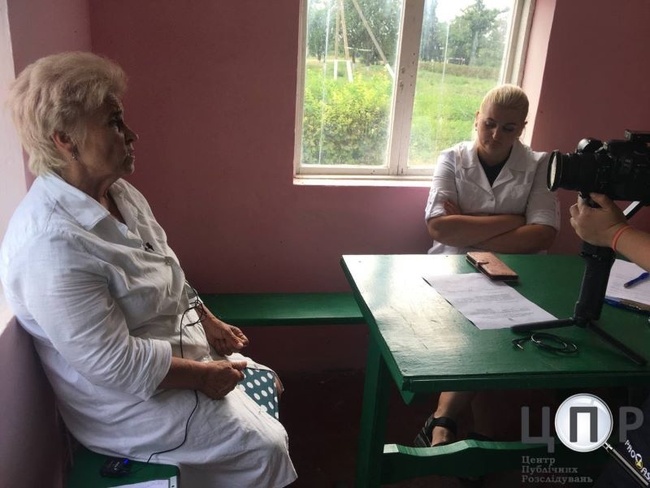 Nurses of Snihurivka colony No. 5 Valentyna (left) and Halyna (right). Photo: CPI
Nurses of Snihurivka colony No. 5 Valentyna (left) and Halyna (right). Photo: CPI
Halyna reported that the Russian military first surrounded the colony in March 2022. However, during this initial encounter, they engaged in discussions with the staff and later relocated to the nearby town of Vavylive, where they set up a station on a farm. Despite several subsequent visits, it wasn't until the end of May that they decided to capture the penal colony for use as their headquarters.
"They drove in with three Ural trucks, surrounding the place and preventing anyone from getting close. Those on duty, including medical staff, were confined inside. The prisoners were loaded into these Urals without any personal belongings. It seemed they were aware of the prisoner uniforms in advance, as they efficiently loaded everyone into the vehicles. Among the prisoners were those with multidrug-resistant tuberculosis, some with isolated TB bacteria, and others serving life sentences. The prisoners resisted, refusing to go, and we could clearly hear gunshots. They threatened and beat the lifers. The prisoners left with nothing – no belongings, medications, or medical records," recounted Halyna, the senior nurse of Snihurivka colony.
Kidnapping under the guise of evacuation
The non-governmental organisation 'Protection of Prisoners', headed by Oleh Tsvilyi, has been actively involved in collecting information and helping kidnapped convicts. Some of them have already been returned to Ukraine. Thanks to human rights defenders, two convicts were returned from the Snihurivka colony. They shared valuable information about the way the Ukrainian prisoners were kidnapped and their location.
Oleh Tsvilyi said: "When they were being kidnapped, the Russian military came in and threw a stun grenade. They started shooting at the ceiling. It was in the department where the seriously ill patients were kept. In fact, some were hit with the stock, while others were somehow being hurried along, all in an effort to gather everything quickly. Of course, they didn't gather all their things. The most important thing, the most tragic thing, is that they did not take their medical records with them."
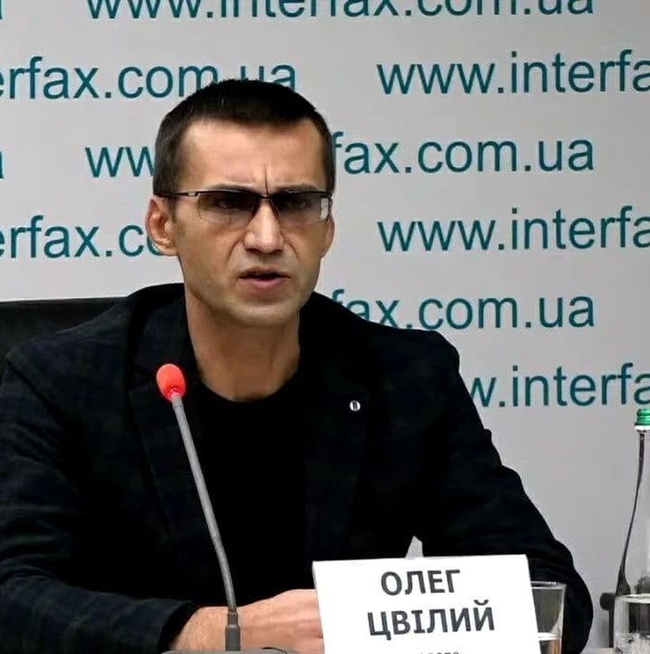 Oleh Tsvilyi. Photo from his Facebook page
Oleh Tsvilyi. Photo from his Facebook page
According to the human rights defender, the kidnapping of convicts in Tsentralne is, unfortunately, not a rare case in the temporarily occupied territories. The Russian invaders put pressure on the convicts to obtain the aggressor country's citizenship. In this way, the invaders are preparing the ground for the mobilisation of Ukrainian prisoners for war and creating a narrative for propaganda. Some convicts are used as slaves and exchange funds. Besides, some of the kidnapped prisoners are no longer alive: "This kidnapping was done under the guise of evacuation... There was an attempt to use the convicts as an exchange fund. In addition, the convicts are held in Hola Prystan, Chongar. There are about 200 people, and not all of them were taken to Russia. These guys are used as slaves. They are building a prison there, houses for collaborators. Before that, they were involved in loading various archives and robbing hospitals... They were also used in cutting wood for dugouts and making coffins."
A local resident was kidnapped by the invaders in Tsentralne
Not only prisoners were kidnapped by the Russian invaders. In June 2022, following the capture of the Snihurivka colony and the kidnapping of prisoners, the Pukivskyі family suffered a terrible tragedy.
"On 18 June, he (Yaroslav Pukivskyі - ed.) went to work. Everything was as usual. A boy who lives in our village came running and said: 'Aunt Tania, take the documents; Uncle Slava has been taken away by the invaders. I thought what documents, he had all his documents on hand... I ran and took our marriage certificate and my passport and ran to my mother-in-law's house. We got on a motorbike and went to the colony where he worked," recalls Tatiana, the wife of Yaroslav Pukivskyі, who was kidnapped by the invaders. According to the woman, the colony guards were still working at that time.
The Russian military did not explain anything to Yaroslav Pukivskyi's wife and mother: "We went to Vavylove, where their bases were located. As we passed through Vavylove, there were dams and their checkpoint. Of course, we were not allowed to go further. They radioed that we had approached. I don't know his name, but his call sign was "Kot"... My mother-in-law said: give me my son, and he immediately started shouting at us... He only spoke Russian. And my mother-in-law said: 'You took Slava away; why did you take him away from work? He began telling us that at night someone in the colony was shining a flashlight, revealing their positions. And I said: hold on, Slavyk just started his shift today. He didn’t believe us... He started coming up to Mother step by step and yelling at her. I was thinking: 'Oh, God, Slavyk has been taken away, and now my mother-in-law and I will be taken away. What will the children do then?
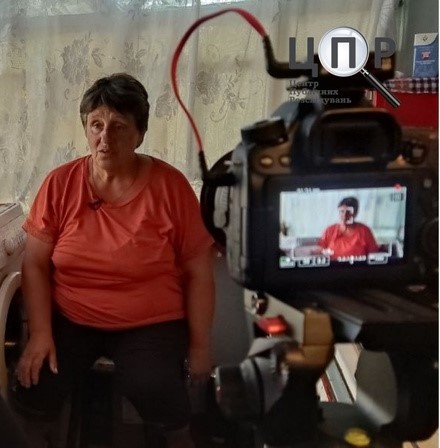 Yaroslav's mother, Olesia Pukivska. Photo: CPI
Yaroslav's mother, Olesia Pukivska. Photo: CPI
A man who worked as a guard in Snihurivka colony was suspected of cooperating with the Ukrainian Defence Forces. The so-called evidence for the Russian invaders was Yaroslav Pukivskyi's Facebook profile, where he had a Ukrainian soldier among his friends. Neither an investigation nor access to relatives was provided by the invaders. According to rumours, the man may be in the occupied Nova Kakhovka. Relatives say that the Russian soldier with the call sign 'Kot', who may be involved in the kidnapping and illegal detention of Yaroslav Pukivskyi, is the person depicted in the photo.
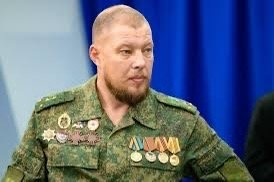 Konstiantyn Ivanov. Photo from the network
Konstiantyn Ivanov. Photo from the network
We found the occupier's real name. It turned out to be the artillery battalion commander of the "Kalmius" brigade, Konstiantyn Ivanov. According to the propaganda publication 'Ukraine.ru', to which 'Kot' - Ivanov gave an interview in September of this year, he is 40 years old, has been fighting since 2014, and originally served in the infantry.
Before Russia’s occupation of Donbas, he lived in Torets (Donetsk region), worked as a welder, driver and in other trade jobs. He has received awards from the fake government of the so-called "Donetsk People's Republic". Currently, he is supposedly in the Avdiivka direction. In 2022, he participated in the capture of Mariupol and Volnovakha.
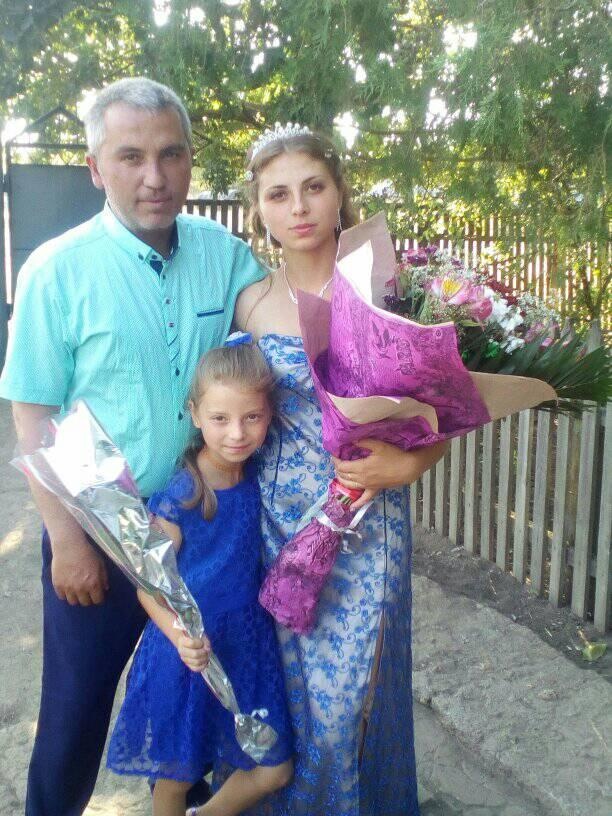 Yaroslav Pukivskyi with his daughters. Photo from his personal Facebook page
Yaroslav Pukivskyi with his daughters. Photo from his personal Facebook page
Human rights defender Oleh Tsvilyi emphasises that many representatives of the penal system in the occupied territories have suffered: "They are kept somewhere separate, not with the convicts. I also know that many employees and people from other institutions have suffered. As I remember, they took a lot of prisoners out of the Mariupol pre-trial detention centre. It is said that first, they were taken to Berdiansk, then to Luhansk, somewhere in the temporarily occupied territories. They are treated differently. They (the invaders - ed.) torture and abuse them. Perhaps, many of them are no longer alive."
The Mykolaiv Prosecutor's Office, upon our request, informed us that it had not yet established the location of Yaroslav Pukivskyi. The ombudsman's office noted that in February 2023, they sent letters to the Ukrainian National Centre for Peacebuilding and the Red Cross delegation in Ukraine. However, the family still does not know the fate of Yaroslav or whether he is alive.
Kherson region-Crimea-Rostov
Let's find out who may be involved in the kidnapping and forced detention of Ukrainian citizens. And how they were taken away.
According to Oleh Tsviliy, the transfer of kidnapped convicts by the occupiers is always done in a cruel way: "Many people did not reach the destination during the so-called evacuation. We have evidence that they were beaten on the way. We have evidence that when they were being transported, they said: we don't care about quality, we care about quantity. That is, if you take a step to the left or right, we will shoot you here and bring your corpse... That's how they were transported. They were beaten in the Simferopol pre-trial detention centre. Then some were beaten in Russia. They took all their stuff and dressed them in prison uniform... Upon arrival in Russia, we have evidence that convicts with tuberculosis died because they started receiving treatment only two months later. Many people died from the lack of timely medical care. Some people died from beatings and improper treatment. All of them were held for a very long time. Besides, they were not allowed to go to the toilet; they were not fed, and there was no air to breathe. They were packed into the prison van in such a way that condensation was dripping from the ceiling. So, the conditions were horrible."
From the prisoners, human rights defenders managed to establish the route of transfer: first, the prisoners of the Snihurivka colony were taken to Kherson, then held in Hola Prystan, and then sent to Rostov region via the Simferopol pre-trial detention centre in Crimea.
The Mykolaiv Prosecutor's Office confirmed that the prisoners from Tsentralne were first taken to the occupied Kherson region. At the moment, the invaders have released some of the prisoners after the expiry of their sentences. They have already returned to Ukraine. Also, some convicts managed to return to the controlled territory of Ukraine. They continue to serve their sentences here. The prosecutor's office did not provide the number of prisoners of Snihurivka colony who returned to Ukraine. The kidnapping of convicts is impossible without the "help" of collaborators. Who are the Ukrainian accomplices of the Russian invaders involved in this crime?
Certain collaborators have already been suspected
According to the residents of Tsentralne, the invaders offered the Snihurivka colony employees to move to Kherson to continue working. They promised to provide accommodation in the occupied city. Several collaborators accepted the offer of the Russian military. In January, three former employees of the institution were notified of suspicion.
According to the State Bureau of Investigation, the head of the station, senior and junior inspectors of the Snihurivka correctional facility voluntarily sided with the invaders and were given positions in the Kherson pre-trial detention centre. During the liberation of the city, the collaborators fled with the invaders.
The former head of the correctional facility No. 90 in Nova Kakhovka, Yevhen Soboliev, played a significant role in the kidnapping of prisoners from the Snihurivka colony in the Mykolaiv region. The collaborator volunteered to head the penal system under the occupation authorities in the Kherson region.
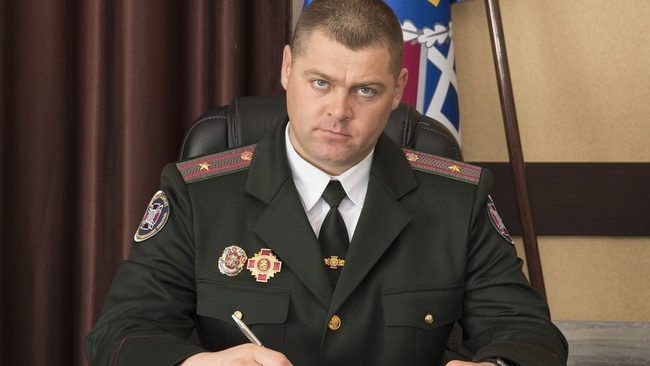 Yevhen Soboliev. Photo from the network
Yevhen Soboliev. Photo from the network
According to the investigation, it was he who was involved in the deportation of Ukrainian convicts and, possibly, the guard from Tsentralne, Yaroslav Pukivskyi, to the occupied territories and to Russia. The collaborators were indicted in May 2022. And on July 23, law enforcement officers completed the investigation against Soboliev.
According to the Myrotvorets website, Yevhen Soboliev, born in 1985, is registered at 13 Horkyi Street, apartment 76, Nova Kakhovka. As of now, the settlement is currently under the control of the invaders.
Last year, a car with Soboliev in it was blown up in Kherson. The explosion injured the collaborator. But not only these collaborators are involved in the kidnapping of Ukrainians from Tsentralne.
"They were first moved to the Holopsystan correctional facility No. 7. This is also our specialised Ukrainian tuberculosis hospital. However, the prisoners that we managed to return say that the conditions and treatment are like chalk and cheese. In colony No. 5 (Snihurivka correctional facility in Tsentralne), it was much better both with medicines and conditions," says Oleg Tsvilyi.
We are talking about the Holoprystan Correctional Colony No. 7 in the Kherson region. It had an interregional specialised tuberculosis hospital. According to the Kharkiv Human Rights Group, during the occupation of the settlement, the head and first deputy quit the institution, refusing to work under the temporary invaders. According to the YouControl analytical system, the colony was headed by Serhii Naprasnikov at the time.
Currently, the settlement is still under occupation. After the liberation of Kherson, Naprasnikov became the head of the Northern Correctional Colony No. 90 in the city. According to human rights defenders, after Hola Prystan, the Russian invaders took at least some of the kidnapped convicts of the Snihurivka colony to Russia through Crimea. The Simferopol pre-trial detention centre has become a transhipment base for Ukrainian prisoners. It is run by another collaborator, Serhii Berezhnyi.
According to Myrotvorets, after the occupation and annexation of Crimea Berezhnyi sided with the invaders, received Russian citizenship and began to build a career in the so-called Russian federal penal system.
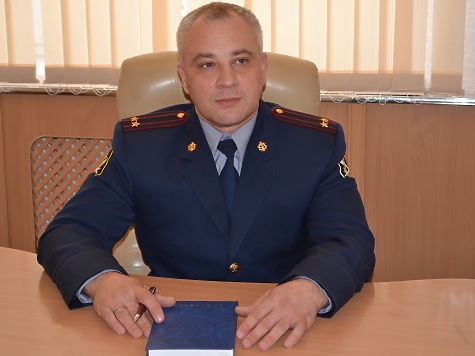 Serhii Berezhnyi. Picture from the network
Serhii Berezhnyi. Picture from the network
Berezhnyi is registered in Simferopol, 4 Komsomolska Street, apartment 26. Throughout the occupation of Crimea, the Simferopol pre-trial detention centre reported regular torture and beatings of prisoners, including Ukrainian citizens. We found Berezhnyi on "Vkontakte" and sent him a message. However, it appears that the collaborator rarely checks the social network and hasn't read our message yet. From Crimea, the prisoners from Tsentralne were taken to Rostov region.
"We found people in the colony No. 20. This is a Russian colony. It is located in Shakhty (Rostov region, Russia - ed.). It is a tuberculosis colony, so to say. The colony No. 19 is a penitentiary institution. These institutions house tuberculosis patients," stated Tsvilyi.
Russian war criminals
The colony No. 20 in the Rostov region is labelled as a medical correctional facility led by Maxym Chumakov. Unfortunately, his photo couldn't be found online.
Another facility housing Ukrainian prisoners from Snihurivka colony is the interregional tuberculosis hospital No. 19 in Rostov-on-Don. The institution is headed by Mykola Yeroshenko. Both facilities are under Dmytro Bezrukykh’s control, who is the head of the FPS department in the Rostov region.
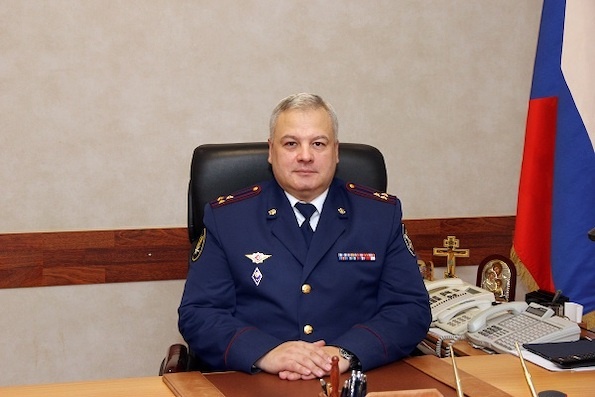 Dmytro Bezrukykh. Photo from the network
Dmytro Bezrukykh. Photo from the network
This individual was involved in helping the late head of the PMC "Wagner", Yevhen Prygozhyn, recruit fighters for the war from among prisoners in the region. A number of countries have imposed sanctions on Bezrukykh for these activities.
The Russian penal system is quite closed. This is not surprising, considering that prisons in Russia are still more like Soviet concentration camps where prisoners face humiliation and torture. It is worth mentioning the 2021 report by Vladimir Osechkin, the head of the Russian organization Gulag.net, which details the regular rape of prisoners in Russian colonies.
However, we managed to find several representatives of the FPS system in the Rostov region and inquired why Russia is taking Ukrainian prisoners.
Borys Marukhian heads the FPS press service in the Rostov region. By the way, it was he who communicated about the captured in 2014 "aidarivka" Nadiia Savchenko. She was held in a pre-trial detention centre in Rostov-on-Don but was later exchanged."
We messaged Marukhian on Vkontakte, he read the message, and then restricted the ability to write to him.
We also wrote to several of Marukhian's colleagues, whom we found through his social media page. This included the profiles of "Ufsyn Krym" and "Anna Mykhailivna" from Shakhty, Rostov region.
"Anna Mykhailivna" read the message but left it unanswered. "Ufsyn Krym" also read our message but apparently chose to ignore it.
The International Criminal Court has issued a lifelong arrest warrant for Putin for the kidnapping of Ukrainian children. We hope that these charges will also include episodes of Ukrainian prisoner kidnapping. After all, prisoners are among the most vulnerable categories of citizens during the war, and their kidnapping constitutes a serious war crime.
Олена Чернишова




